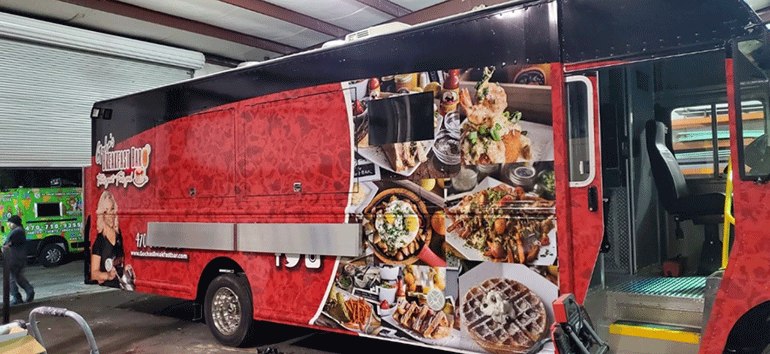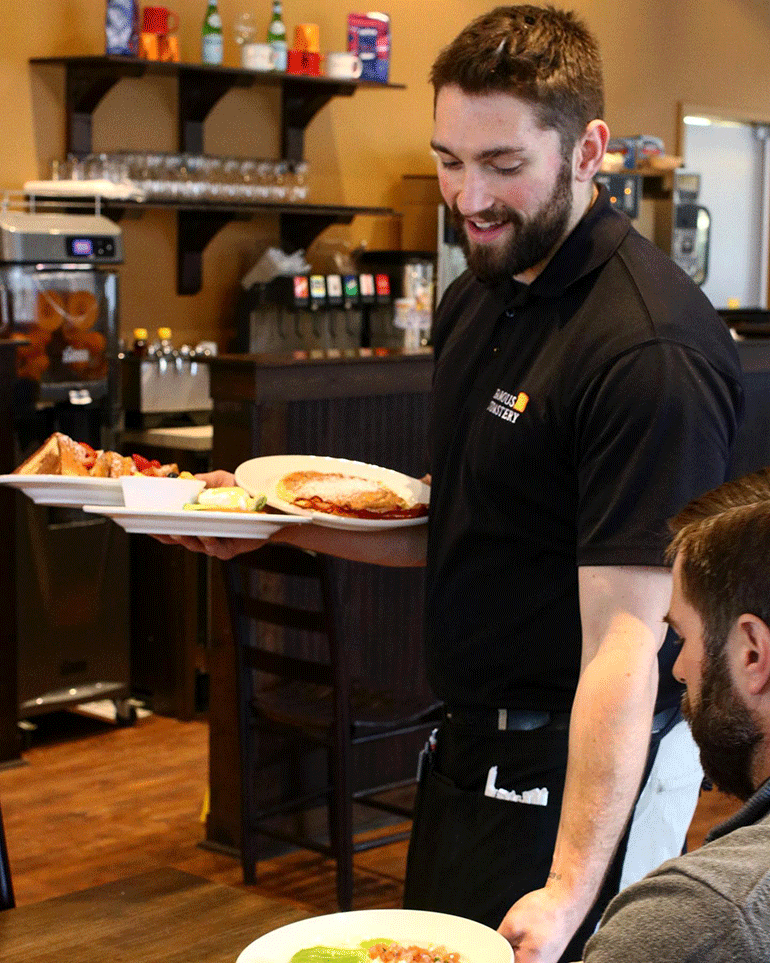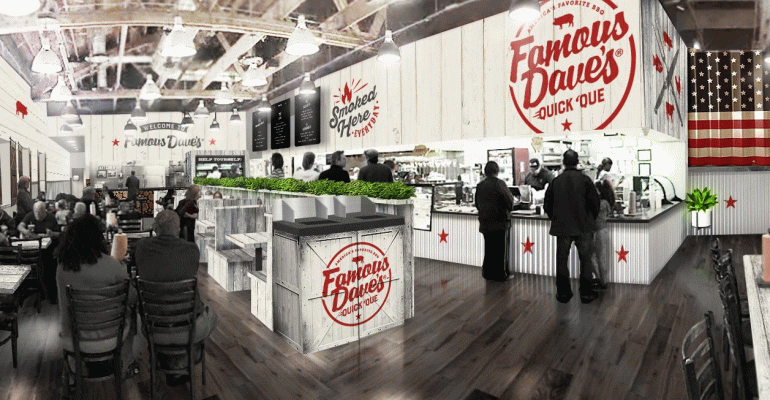Over the past two years of the COVID-19 pandemic, the word “pivot” has become the cliched descriptor for the restaurant industry’s quick, collective investment in technology to make their businesses delivery-friendly in the face of shuttered dining rooms.
But now as Americans head back to so-called normal, many customers are still opting for takeout instead of dine-in. In fact, according to data from The NPD Group, in February 2022, off-premises orders were still 92% higher than in February 2019.
So what happened to the promised pent-up demand for dining out? As it turns out, both on and off-premises demand increased simultaneously.
These days, “meeting your customers where they are” has largely replaced the standard customer service mantra of “service with a smile.” The most successful restaurant operators allow customers to make the service choice that’s right for them based on their mood, needs and schedule, whether it’s ordering in a drive-thru, third-party delivery, contactless pickup or classic dine-in.
“The conventional definitions of service were all around the human element,” David Portalatin, vice president and food industry advisor at The NPD Group, said. “The emerging new definitions of service are more based on the technology element. So, whether that's through a smartphone app and its user interface, or the way you can create loyalty and engage customers with digital rewards, everything is done nowadays to increase convenience for the consumer.”
Gocha Hawkins, owner and founder of Gocha’s Breakfast Bar in Atlanta, which just opened its second location during the pandemic, was not expecting the crush of demand she received for to-go orders over the past couple of years. As a small business that has been struggling with the industry’s labor crisis, wait times for both her to-go customers and dine-in customers were increasing unexpectedly.

Staff at Gocha's Breakfast Bar take turns taking shifts on the truck.
Her solution was to open a food truck right outside of her original restaurant to handle to-go orders and help improve overall guest experience.
“Now, no matter how full we get, we're able to handle the in-house guests,” Hawkins said. “As long as we have the food truck handling our to-go orders, everyone’s receiving a great experience. Before that, everyone — from dine-in guests to delivery drivers — was waiting a long time for their food and it got crazy.”
Restaurant staff take turns taking shifts on the truck, which does not require extra hands on deck to run efficiently, and the truck is raking in extra revenue because it can cater events.
While some operators like Hawkins were surprised by the amount of off-premises demand from customers, Famous Dave’s was already headed that way pre-pandemic. Sales at the national barbecue chain were comprised of half off-premises orders, and now with the barbecue brand’s investment in virtual brands, ghost kitchens and dual-branded restaurants over the past two years, that number has increased to 60%.
“It’s all about convenience now,” said Amy Williams, director of off-premises for Famous Dave’s. “We’ve had to perfect all of these [off-premises options] quickly and streamline them into what we need them to be. … The pandemic pushed us to do things in six months that we would normally roll out in two years.”
In addition to the company’s investment in ghost kitchens and virtual brands, Famous Dave’s is testing tableside ordering and geofencing technology at select stores to make the customer experience even easier and more customizable. The company opted to use devices for tableside ordering instead of the pandemic-popular QR codes to make the experience more user-friendly and add experiences like branded games to the devices. Customers can choose for themselves the level of interactivity they have with either a device or a server.
“I think our customers are leaning toward the off-premises ‘I can do this myself’ approach to dining,” Williams said. “We do have a lot of repeat customers that still want that face-to-face contact. But as we’re attracting some younger customers to the brand, I think they’re leaning toward the tech side.”
As for geofencing, Williams said the technology addition is “in its infancy stages” and is being tested in two locations. If the test of the new technology — which automatically tells the restaurant when a customer drives up to pick up their order— takes off, it will be yet another way that customer service has become more about the “seamless and convenient” experience, Williams said.
Despite this focus on human-free technology, Williams said they still train employees to have meaningful interactions with customers, even if it’s just to clarify the contents of a to-go bag for a customer that’s choosing to pick up their order instead of dine in the store.
“This isn’t only about ensuring order accuracy, but also about engaging with each guest to make sure they have everything they need,” Williams said.
While giving customers their service of choice is important, operators also have to make that choice, and some are choosing to purposefully lean away from convenience technology saturation. Famous Toastery, the 30-unit, Davidson, N.C.-based breakfast brand, was only too happy to return to the traditional casual-dining experience as the pandemic’s effects faded.

The flashiest technology Famous Toastery has invested in over the past two years is a POS upgrade to handle the steady uptick in delivery orders.
“People will spend hours and hours talking about AI and automation at a restaurant and how we know who’s going to walk in the door,” Famous Toastery cofounder and CEO Robert Maynard said. “But what they don’t talk about is how people need people: they like to sit across from each other and have a conversation.”
The flashiest technology the brand has invested in over the past two years is a POS upgrade to handle the steady uptick in delivery orders. Adding that “we don’t want to have dinner over Zoom anymore,” Maynard said that they’ve doubled down on the classic idea of customer service in 2022 and that what their customers want is human interaction and consistent experiences. With a DoorDash order, he said, you can’t guarantee either of those.
“Customer service is always evolving, and I think there will be a shift back to more experiential in-person dining,” said Alec Haesler, director at investment bank Carl Marks Advisors. “But you have a growing subsect of customers that really liked the to-go culture during the pandemic. So, you have to make sure you’re doing that, you’re doing it well and that the quality holds up.”
Read more:
MENU: Two years after the pandemic started, menus are leaner, smarter — and often better
OPERATIONS: Sustainability moves up priority list after COVID’s shut-down lessons
TECHNOLOGY: Virtual brands have matured from curious idea to pandemic life saver
COMMUNITY: How foodservice philanthropy rose to the occasion in unprecedented crisis
Contact Joanna Fantozzi at [email protected]
Follow her on Twitter @JoannaFantozzi





